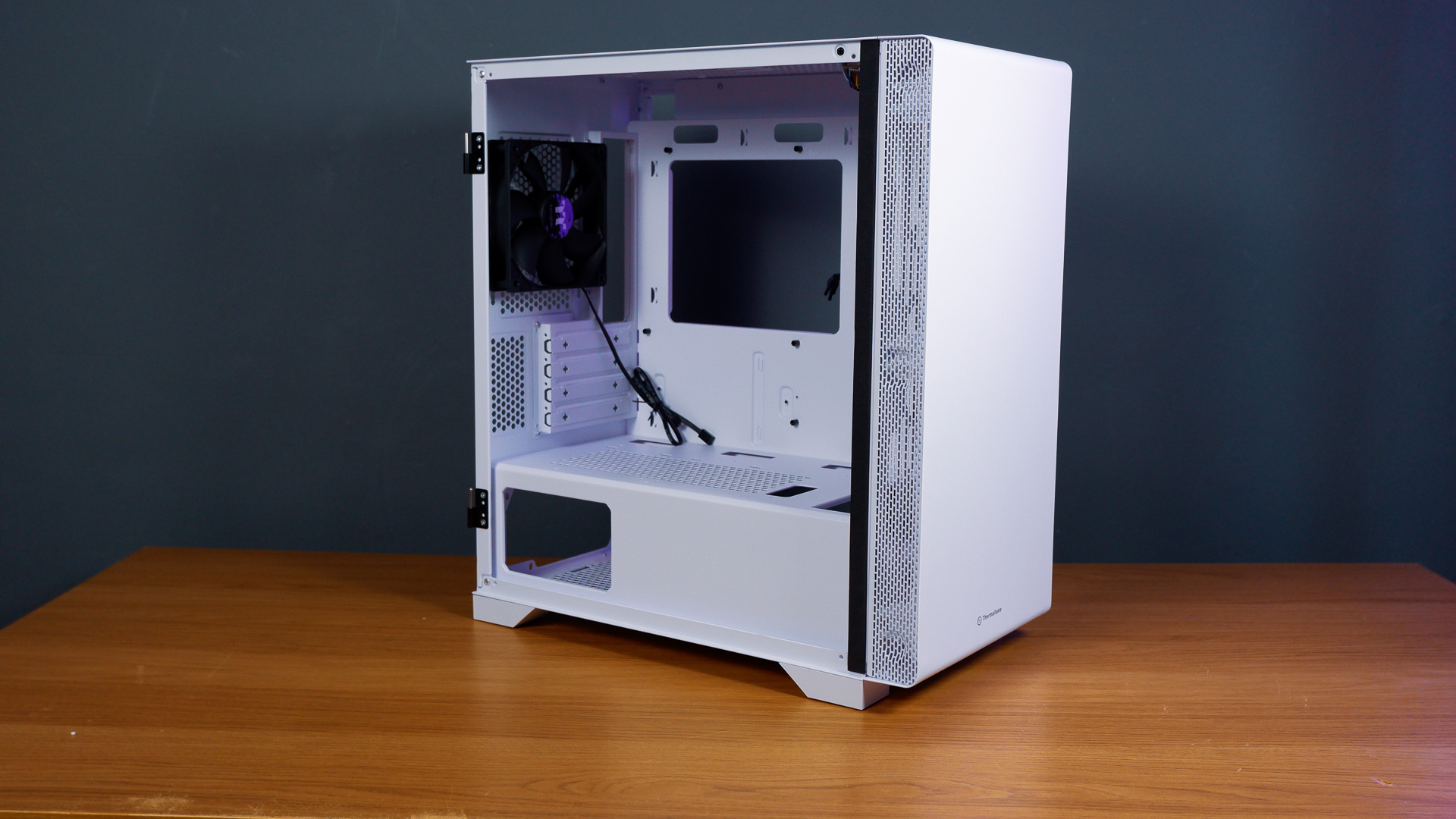Rise of the Tomb Raider AMD 16.1.1 Hotfix Testing

Can AMD's Crimson 16.1.1 Hotfix rise to the occasion?
Last week, Rise of the Tomb Raider launched and received fairly good reviews. We then benchmarked the game to see how AMD and Nvidia GPUs stack up, along with checking out the CPU side of things. At the time, AMD was running "unoptimized" drivers while Nvidia had already released their 361.75 Game Ready drivers. We were told AMD was working to improve performance and would hopefully have an updated driver available this week, and they've followed through with their Crimson 16.1.1 Hotfix.
To be clear, these are drivers that are only supposed to help with Rise of the Tomb Raider—performance in other titles shouldn't change, but AMD makes no promises. This is the difference between a beta (preview of a general update) and a hotfix (usually focused on one or two specific items that have been deemed critical).
We've covered all of the benchmarking details in our earlier article, so let's just jump straight to the chase. We're focusing purely on AMD performance here; if you want to see Nvidia numbers, nothing has changed from before. The reason for limiting testing will become fairly obvious in a moment. Here's our test system:
| Maximum PC Graphics Card Test Bed | |
|---|---|
| CPU | Intel Core i7-5930K: 6-core HT OC'ed @ 4.2GHz |
| Mobo | Gigabyte GA-X99-UD4 |
| GPUs | AMD R9 Fury X (Reference)AMD R9 390 (Sapphire)AMD R9 380 (Sapphire)AMD R9 285 (Sapphire) |
| SSD | Samsung 850 EVO 2TB |
| PSU | EVGA SuperNOVA 1300 G2 |
| Memory | G.Skill Ripjaws 16GB DDR4-2666 |
| Cooler | Cooler Master Nepton 280L |
| Case | Cooler Master CM Storm Trooper |
| OS | Windows 10 Pro 64-bit |
| Drivers | AMD Crimson 16.1 AMD Crimson 16.1.1 Hotfix |
Note that we don't currently have any CrossFire configurations available, as our second 290X has gone kaput sometime during the past two months. CrossFire support is one of the items 16.1.1 apparently fixes, so if you have multiple AMD GPUs, that's at least a good sign. As before, we're using the same five test settings:
- 3840x2160, FXAA, High preset
- 2560x1440, TMAA, Very High preset (without HBAO+)
- 1920x1080, TMAA, Very High preset (without HBAO+)
- 1920x1080, TMAA, High preset
- 1920x1080, TMAA, Medium preset
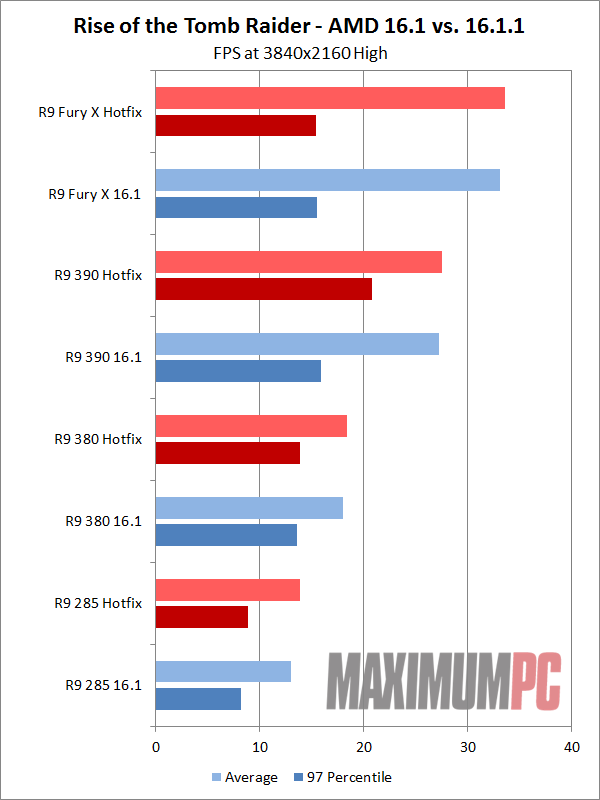
Okay, did we miss something? Sure, the Hotfix drivers at least equal the performance of the previous drivers, but we're basically looking at margin of error here for most of the cards. There are two exceptions: The R9 390 97 percentiles are significantly better, and the R9 285 2GB is about eight percent faster. Otherwise, you basically won't notice any changes. It's too bad the same boost to minimum fps didn't happen on the Fury X, as it could have pushed the card into mostly playable territory. It's still breaking 30 fps, if only barely, but there's a lot of stuttering as you move around the game world.
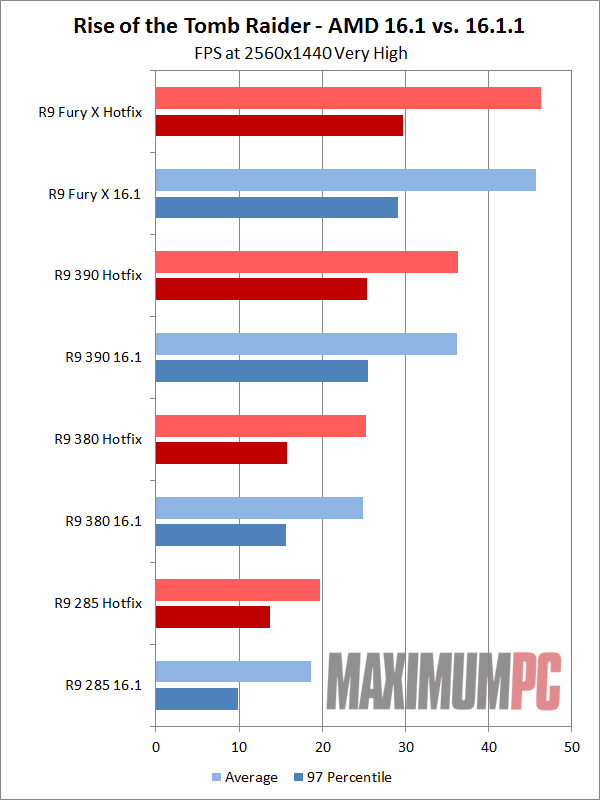
At 2560x1440 with Very High settings, the situation is almost worse. Yes, we're still matching performance of the earlier drivers, but the R9 285 is again the sole benefactor. Average frame rates are up six percent, and 97 percentiles are up 38 percent. Unfortunately, that particular GPU is so far from being playable at these settings that it's an almost meaningless improvement.
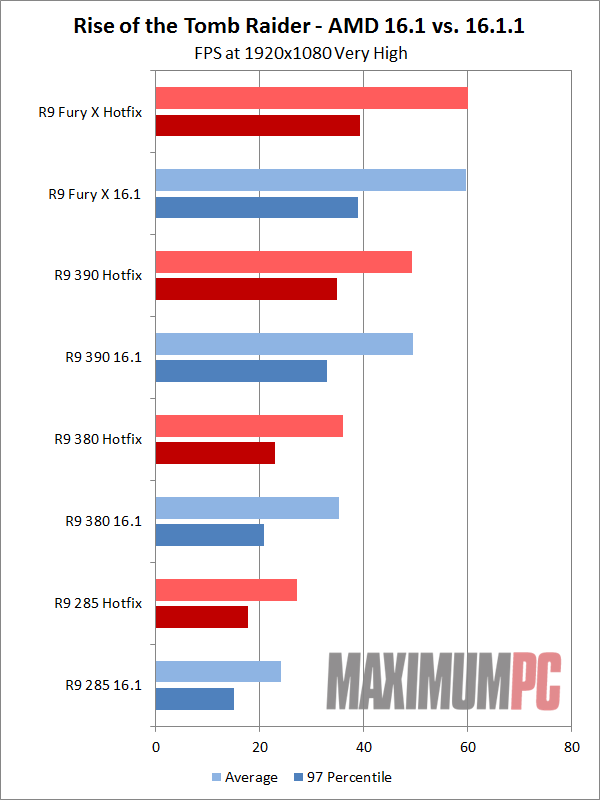
The story is the same at 1080p Very High, with the R9 285 improving by 13 percent while everything else is less than a two percent change. The R9 380 does show a 10 percent bump to 97 percentiles, but it's not something you'd generally notice.
Keep up to date with the most important stories and the best deals, as picked by the PC Gamer team.
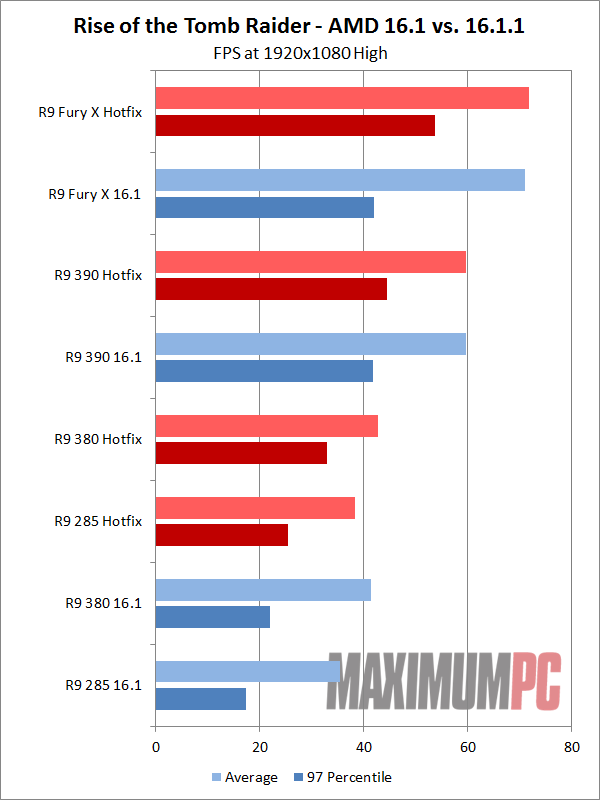
Hey, would you look at this? At 1080p High, we actually see some decent improvements on most of the GPUs…except it's still only to the 97 percentiles. The R9 390 with its large 8GB VRAM doesn't see any benefit, but nearly all of the other GPUs are now consistently staying above 30 fps. The Tonga-based R9 380 and R9 285 both see a jump of roughly 50 percent on minimum frame rates, and at least on the 4GB VRAM card it's enough to smooth out most of the stuttering. And once again, the R9 285 sees at least a statistically significant 8 percent increase to average fps, though anything less than 15 percent is pretty difficult to notice during actual use.
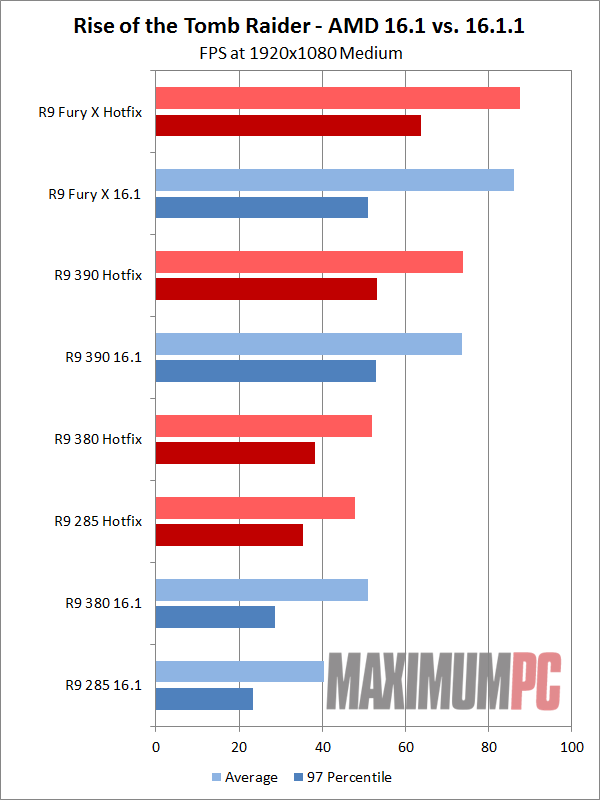
Can 1080p Medium results save the day for the Crimson 16.1.1 Hotfix? Not really. The R9 285 now sees a welcome 18 percent increase in average fps, and another 50 percent gain in minimum fps; that's great and it makes the card actually viable for 1080p Medium gaming in Rise of the Tomb Raider. That's a bit shocking, however, considering the R9 285 is basically faster than any of AMD's current mobile GPUs. For the other cards, Fury X and R9 380 also show improved minimum fps results, but average fps is still basically unchanged.
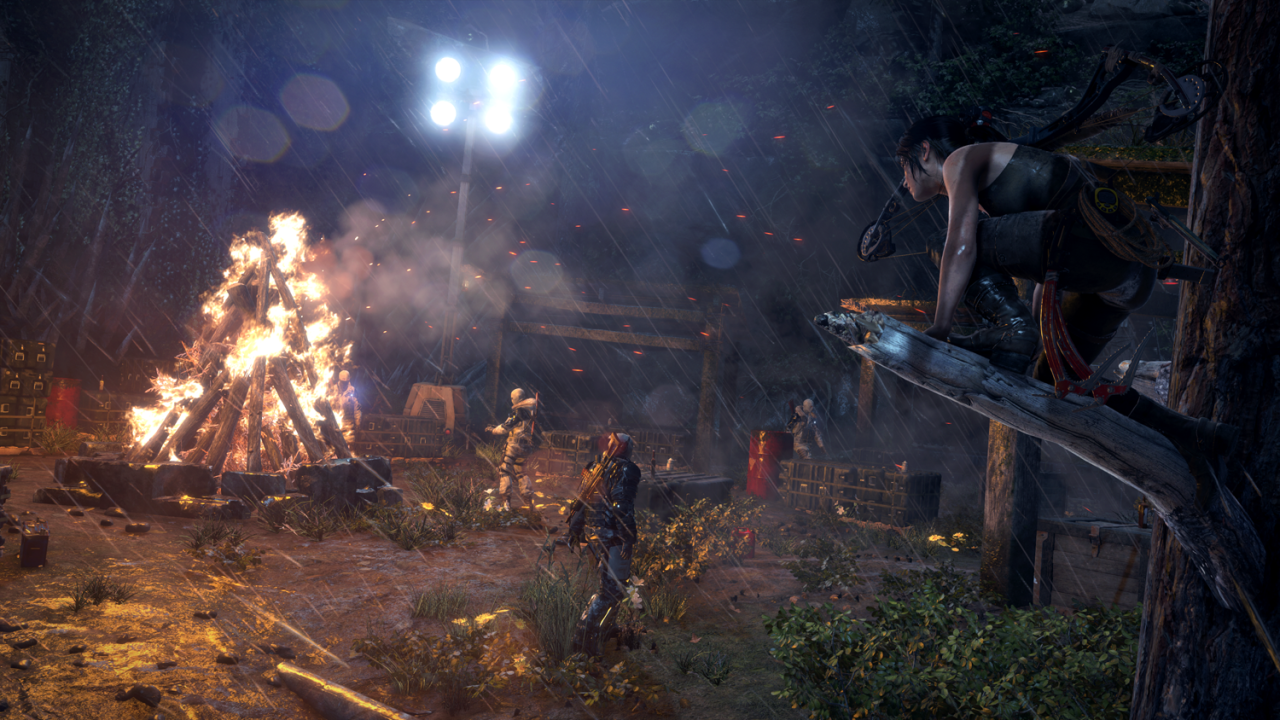
Such a greedy woman
So what's the problem—why is Rise of the Tomb Raider so much more demanding than 2013's Tomb Raider reboot? Judging by our earlier results, it looks like the new Lara is very high maintenance. GPUs that could pull roughly 120 fps at 1080p Ultimate settings in the earlier release are finding performance has been cut in half. In fact, even at 1080p Medium, the results with the new Lara are worse than the 1080p Ultimate results of her predecessor. We can take that a step further: At 1080p on the Low preset, performance is about equal to the old 1080p Ultimate results. Yikes!
What happened? There's no easy answer, as the supported platforms remain the same (PC, PS3, PS4, Xbox 360, and Xbox One), so it's not like the developers were able to radically change the minimum hardware spec by dropping support for older consoles. Except, they did change the minimum hardware required to run Rise of the Tomb Raider—you don't have a prayer of playing this game on Intel's non-Iris graphics solutions, for example. What it comes down to is improved visuals, where even the Low and Medium quality settings look quite good while the High and Very High settings are even better. Consider also that previously, TressFX was only enabled with the Ultimate preset, where PureHair is now toggled on starting at the Medium preset.
Bottom line: Lara is embracing her wealthy upbringing and expecting gamers everywhere to have potent systems. And more likely than not, the PC release isn't nearly as optimized for performance as the console release—though the consoles do seem to top out at the 1080p Medium equivalent in terms of image fidelity. Short of some major improvements from drivers and/or patches, Rise of the Tomb Raider also raises the bar for minimum hardware.
As for AMD's 16.1.1 Hotfix, it doesn't reduce performance, but outside of mainstream cards (particularly those with 2GB VRAM), it also doesn't dramatically improve performance either. CrossFire users will definitely appreciate having support for the game as well, though we weren't able to test that at present. Still, any CrossFire support is better than nothing.
Jarred's love of computers dates back to the dark ages when his dad brought home a DOS 2.3 PC and he left his C-64 behind. He eventually built his first custom PC in 1990 with a 286 12MHz, only to discover it was already woefully outdated when Wing Commander was released a few months later. He holds a BS in Computer Science from Brigham Young University and has been working as a tech journalist since 2004, writing for AnandTech, Maximum PC, and PC Gamer. From the first S3 Virge '3D decelerators' to today's GPUs, Jarred keeps up with all the latest graphics trends and is the one to ask about game performance.


